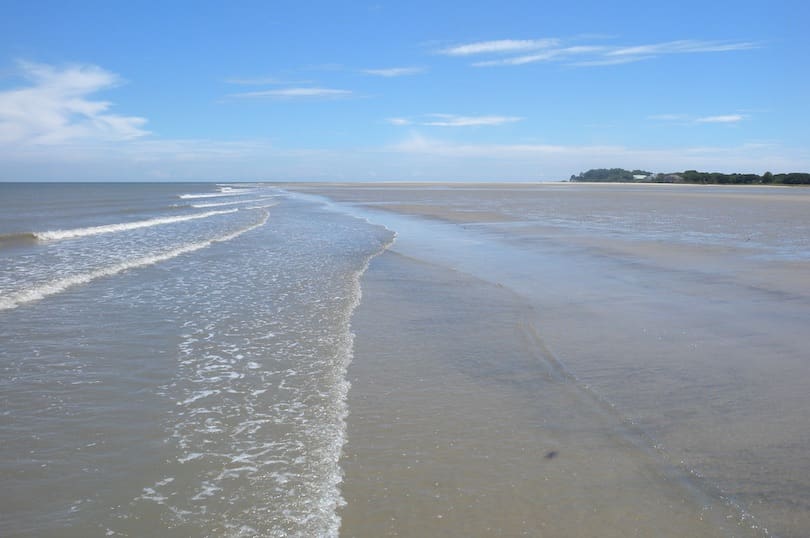Nestled in the heart of Rajasthan, Rajsamand is a quaint district known for its serene lakes, ancient temples, and vibrant cultural heritage. Often overshadowed by more famous destinations like Udaipur and Jaipur, Rajsamand offers a unique blend of history, spirituality, and natural beauty. The region is particularly renowned for its massive man-made lake, Rajsamand Lake , which has been a symbol of royal grandeur and engineering marvel since the 17th century. In this article, we will explore the top 5 places to visit in Rajsamand , uncovering the hidden gems that make this destination truly enchanting.
1. Rajsamand Lake: A Royal Marvel
Rajsamand Lake , built by Maharana Raj Singh I in 1662, is one of the largest artificial lakes in India and the crown jewel of Rajsamand. Surrounded by lush greenery and arched pavilions, this historic lake is not only a testament to the region’s architectural brilliance but also a serene spot for relaxation and introspection.
Why Visit Rajsamand Lake?
The lake is steeped in history and legend, with its roots dating back to the Mewar dynasty. Its tranquil ambiance, panoramic views, and intricate carvings on the marble pavilions make it a must-visit destination for history enthusiasts and nature lovers alike.
Activities to Enjoy
- Boating: Take a leisurely boat ride on the lake and enjoy the cool breeze.
- Photography: Capture the serene waters and scenic views of the surrounding landscape.
- Exploration: Wander through the arched pavilions (toranas) and admire their intricate inscriptions and carvings.
Detailed Exploration of Rajsamand Lake
Rajsamand Lake spans over 4 miles in length and was constructed as a drought-relief project during the reign of Maharana Raj Singh I. The lake is fed by the Gomati, Kelwa, and Tali rivers, creating a vast reservoir that supports agriculture and wildlife in the region.
One of the highlights of the lake is its marble toranas (arched pavilions), which are adorned with intricate carvings and inscriptions in Sanskrit. These inscriptions narrate the history of the Mewar dynasty and the construction of the lake, making them a valuable resource for historians and archaeologists.
The area around the lake is ideal for picnics and photography. The rolling hills and lush greenery create a picturesque backdrop, perfect for capturing memories of the visit. Visitors are encouraged to bring cameras to capture these beautiful moments.
For families, Rajsamand Lake is an ideal spot for outdoor activities. Children can play in the open spaces, while adults relax and enjoy the serene environment. Local vendors often sell snacks and refreshments, adding to the convenience of a day out by the lake.
2. Kumbhalgarh Fort: A UNESCO World Heritage Site
Kumbhalgarh Fort , located approximately 60 kilometers from Rajsamand, is one of the most iconic forts in Rajasthan and a UNESCO World Heritage Site. Known for its massive walls, sprawling complex, and strategic location, this fort is a must-visit destination for history enthusiasts and adventure seekers.
Why Visit Kumbhalgarh Fort?
The fort is not only a relic of the past but also a symbol of resilience and architectural brilliance. Its imposing walls, panoramic views of the Aravalli Hills, and rich history make it a fascinating destination for exploration.
Activities to Enjoy
- Exploration: Wander through the fort’s ruins and learn about its rich history through guided tours.
- Photography: Capture the fort’s grandeur and the scenic views of the surrounding landscape.
- Trekking: Embark on a trek to the top of the fort for breathtaking views of the Aravalli Range.
Detailed Exploration of Kumbhalgarh Fort
Kumbhalgarh Fort was built in the 15th century by Maharana Kumbha and served as a second capital of the Mewar kingdom. The fort’s architecture reflects traditional Rajput design, with its massive stone walls stretching over 36 kilometers, earning it the nickname “The Great Wall of India.”
One of the unique features of Kumbhalgarh Fort is its strategic location atop a hill, providing natural defense against invaders. Visitors can admire the intricate details of the fort’s structure and capture stunning photographs against the backdrop of the lush greenery and rugged terrain.
The fort also hosts cultural events during festivals like Mahashivratri and Gangaur , where artists perform traditional music and dance. These performances add color and vibrancy to the celebrations, making them a memorable experience for visitors.
For photographers, Kumbhalgarh Fort offers endless opportunities to capture its architectural beauty. The interplay of light and shadow, combined with the symmetry of the structure, creates visually striking compositions. Visitors are encouraged to explore every angle to fully appreciate its grandeur.
3. Shri Dwarkadhish Temple: A Spiritual Retreat
Shri Dwarkadhish Temple , located in Rajsamand town, is a revered shrine dedicated to Lord Krishna. Known for its intricate carvings and spiritual significance, this temple attracts thousands of devotees and tourists every year. Its serene ambiance and architectural beauty make it a must-visit destination for spiritual seekers and history enthusiasts.
Why Visit Shri Dwarkadhish Temple?
The temple is steeped in mythology and legend, with its roots dating back centuries. Its towering spires, intricate carvings, and sacred relics offer a glimpse into the region’s rich spiritual heritage.
Activities to Enjoy
- Spiritual Practices: Participate in daily rituals and seek blessings from Lord Krishna.
- Architecture Appreciation: Admire the temple’s intricate carvings and towering spires.
- Photography: Capture the temple’s grandeur and the surrounding landscape.
Detailed Exploration of Shri Dwarkadhish Temple
Shri Dwarkadhish Temple dates back to the 18th century and is steeped in mythology and legend. The temple’s architecture reflects the elegance of traditional Indian design, with its towering spires, ribbed domes, and intricate carvings. Inside, the sanctum houses a sacred idol of Lord Krishna, flanked by smaller shrines dedicated to other deities.
One of the highlights of Shri Dwarkadhish Temple is its annual fair , held during the month of Magh (January-February). Thousands of pilgrims gather to offer prayers and participate in cultural programs. Traditional music and dance performances add to the festive atmosphere, creating a memorable experience for visitors.
For those interested in local cuisine, the area around the temple offers a variety of vegetarian snacks and sweets. Try delicacies like poha , jalebi , and rabri for an authentic taste of Rajasthan’s culinary heritage.
4. Haldighati: A Historical Battlefield
Haldighati , located approximately 40 kilometers from Rajsamand, is a historic battlefield that witnessed the fierce clash between Maharana Pratap and the Mughal forces led by Man Singh I in 1576. Known for its yellow soil and rich history, Haldighati is a must-visit destination for history enthusiasts and adventure seekers.
Why Visit Haldighati?
The battlefield is steeped in legend and valor, with its roots dating back to the era of Maharana Pratap. Its panoramic views, historical monuments, and vibrant museums make it a fascinating destination for exploration.
Activities to Enjoy
- Exploration: Wander through the battlefield and learn about its rich history through guided tours.
- Photography: Capture the panoramic views of the surrounding landscape.
- Cultural Immersion: Visit the Chetak Smarak and pay homage to Maharana Pratap’s loyal horse, Chetak.
Detailed Exploration of Haldighati
Haldighati is named after its yellow soil, which resembles turmeric (“haldi” in Hindi). The battlefield is home to several monuments, including the Chetak Smarak , a memorial dedicated to Maharana Pratap’s horse, Chetak, who played a crucial role in the battle. Visitors can admire the intricate details of the monument and capture stunning photographs against the backdrop of the rugged terrain.
The area around Haldighati is ideal for nature walks and photography. The rolling hills and dense forests create a picturesque backdrop, perfect for capturing memories of the visit. Visitors are encouraged to bring cameras to capture these beautiful moments.
For families, Haldighati is an ideal spot for picnics and outdoor activities. Children can play in the open spaces, while adults relax and enjoy the serene environment. Local vendors often sell snacks and refreshments, adding to the convenience of a day out at the battlefield.
5. Jain Temples of Ranakpur: A Spiritual Marvel
Jain Temples of Ranakpur , located approximately 90 kilometers from Rajsamand, are among the most exquisite examples of Jain architecture in India. Known for their intricate carvings, towering spires, and spiritual significance, these temples attract thousands of devotees and tourists every year.
Why Visit Jain Temples of Ranakpur?
The temples are not only places of worship but also centers of art and culture. Their towering spires, intricate carvings, and sacred relics offer a glimpse into the region’s rich spiritual heritage.
Activities to Enjoy
- Spiritual Practices: Participate in daily rituals and seek blessings from the deities.
- Architecture Appreciation: Admire the temple’s intricate carvings and towering spires.
- Photography: Capture the temple’s grandeur and the surrounding landscape.
Detailed Exploration of Jain Temples of Ranakpur
The Jain Temples of Ranakpur date back to the 15th century and are dedicated to Lord Adinath, the first Tirthankara of Jainism. The temples’ architecture reflects the elegance of traditional Jain design, with their towering spires, intricately carved pillars, and ornate gateways. Inside, the prayer halls are adorned with intricate murals, thangkas (Tibetan scroll paintings), and statues of Jain deities.
One of the highlights of the Jain Temples of Ranakpur is their intricate carvings , which depict scenes from Jain mythology and history. Visitors can admire the intricate details of the carvings and capture stunning photographs against the backdrop of the lush greenery and rugged terrain.
The temples also host annual festivals like Mahavir Jayanti , which celebrate the birth of Lord Mahavira. During these celebrations, the temples are adorned with flowers, lights, and decorations, creating a festive atmosphere. Traditional music and dance performances add to the cultural richness of the event.
For photographers, the Jain Temples of Ranakpur offer endless opportunities to capture their architectural beauty. The interplay of light and shadow, combined with the symmetry of the structure, creates visually striking compositions. Visitors are encouraged to explore every angle to fully appreciate their grandeur.
A Glimpse into Rajsamand’s Culture and Traditions
Rajsamand is a district where tradition meets modernity. Its vibrant culture is reflected in its festivals, art, and cuisine. Events like Gangaur , Teej , and Diwali are celebrated with great enthusiasm, bringing the community together in joy and harmony.
“Rajsamand’s culture is a tapestry woven with threads of history, faith, and creativity. It is a place where the past and present converge, creating a unique and enchanting experience.”
Detailed Exploration of Rajsamand’s Culture
The cultural landscape of Rajsamand is shaped by its diverse population, which includes Hindus, Jains, and local tribes. Festivals are an integral part of life here, and each celebration has its unique customs and rituals. For example, during Gangaur , women dress in vibrant attire and carry idols of Goddess Parvati in colorful processions.
Music and dance play a significant role in Rajsamand’s cultural identity. Folk songs like mand and maand narrate tales of love, bravery, and daily life. Traditional dances such as Ghoomar and Kalbeliya are performed during weddings and festivals, adding color and vibrancy to celebrations.
Cuisine in Rajsamand is simple yet flavorful, with an emphasis on fresh ingredients and traditional recipes. Staples like dal-baati-churma , gatte ki sabzi , and ker sangri are prepared using age-old techniques. Street food stalls offer delicacies like pyaaz kachori , mirchi vada , and rabri , which are loved by locals and tourists alike.
Conclusion
Rajsamand may not be as well-known as other tourist destinations in Rajasthan, but it is undoubtedly a gem worth exploring. From the historical significance of Kumbhalgarh Fort to the spiritual serenity of Jain Temples of Ranakpur , each destination offers a unique experience that captures the essence of this enchanting region. By visiting these top 5 places to visit in Rajsamand , travelers can immerse themselves in the rich tapestry of history, culture, and natural beauty that defines this remarkable area.
Whether you are planning a solo trip, a family vacation, or a weekend getaway, Rajsamand promises an unforgettable journey filled with discovery and wonder.
Frequently Asked Questions (FAQs)
- What is the best time to visit Rajsamand?
- The best time to visit Rajsamand is between October and March when the weather is pleasant.
- How to reach Rajsamand?
- Rajsamand is accessible by road and rail. The nearest airport is in Udaipur, approximately 50 kilometers away.
- Are there luxury accommodations in Rajsamand?
- While Rajsamand primarily offers budget-friendly guesthouses, there are a few mid-range hotels available.
- Is Rajsamand safe for tourists?
- Yes, Rajsamand is generally safe for tourists. However, it is advisable to take standard precautions and respect local customs.
- What languages are spoken in Rajsamand?
- The primary languages spoken in Rajsamand are Hindi and Rajasthani.
- Can I visit Rajsamand during monsoon season?
- Monsoon visits are possible but challenging due to heavy rainfall and occasional flooding.
- What are some must-try foods in Rajsamand?
- Dal-baati-churma, gatte ki sabzi, ker sangri, and rabri are some must-try traditional dishes in Rajsamand.
- Are there any wildlife sanctuaries near Rajsamand?
- Yes, the Kumbhalgarh Wildlife Sanctuary is located within driving distance.
- Is Rajsamand suitable for solo female travelers?
- With proper planning and precautions, Rajsamand can be a safe destination for solo female travelers.
- What souvenirs can I buy in Rajsamand?
- Handmade crafts, traditional jewelry, and local snacks make excellent souvenirs.













